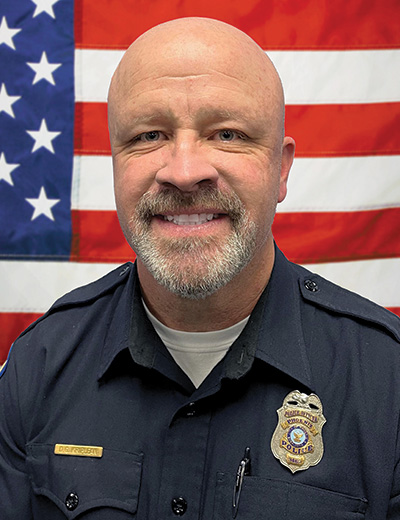
President
dkriplean@azplea.com
Leadership has many definitions and characteristics. In our profession, being a leader doesn’t always mean being promoted. Leadership can be learned; however, someone who has leadership ingrained in their DNA tends to stand out.
Being promoted to a position of management does not always mean the individual is a leader. Throughout my career, I have been fortunate enough to have worked with and around some folks who were outstanding leaders, from fellow squadmates all the way up through the command structure. I have also encountered many who are better described as “managers.”
One aspect of leadership is having the courage to make decisions devoid of emotion that are for the greater good, even if it means facing criticism for the decision.
Take, for example, our Critical Incident Review (formerly known as Use of Force) and Discipline Review boards. The Critical Incident Review Board consists of one assistant chief, one commander, one employee peer and three citizens of Phoenix. In comparison, the Discipline Review Board consists of one assistant chief, two commanders, two employee peers and two citizens of Phoenix. In addition to the board members, subject-matter experts from the Academy, along with a Department legal advisor, are present to answer any questions the board members may have.
Prior to the board convening, each member is given sufficient time to review the entire investigation. At the board meeting, the PSB investigator presents an overview of the case via PowerPoint. Following the presentation, the board members can ask questions to ensure they understand the information completely. When that portion has concluded, the officer(s) who are the subject of the investigation or their PLEA representative are able to make their own presentation to provide additional information for the board’s consideration. The board can ask questions of the officer or their representative at the conclusion of their presentation.
Once this portion is completed, everyone but the board members leaves the room so that the board can deliberate and have discussions among themselves. When the board has completed their deliberations, the officer(s) return, and the board chair conveys the board’s recommendation to the police chief. In the case of a critical incident review, it will be a recommendation of in policy or out of policy. In instances of discipline review, it will be a recommendation of length of suspension or termination.
Historically, the police chief has rarely deviated from the recommendations of the boards. I believe the reason for that is that the boards have been presented with an extensive, in-depth presentation and have been able to understand the circumstances surrounding each incident at a granular level.
Currently, we find ourselves in an environment where the chief is deviating from the recommendations quite regularly. There are examples of critical incidents deemed “in policy” by the review board being overturned for no other reason than “how it looks.” We have several examples of discipline recommendations being considered too lenient, even though they fall within the appropriate range for the class of violation.
In addition, some officers have been tasked with a decision to accept huge suspensions or be fired and fight for their jobs back based simply on how an incident looks or was perceived by some vocal members of the public, even though the “violation” falls within the Class I and Class II categories.
This leads me to question the necessity of these boards and even the discipline policy. Are these boards simply utilized to give the perception of community involvement in determining whether or not a use of force is in policy or to determine appropriate discipline? What is the point of wasting everyone’s time if the chief is ultimately going to disregard the boards’ recommendations? What is the point of having an addendum that prescribes where violations of policy fall and the range of discipline that should be administered if it isn’t going to be adhered to?
I doubt the Chief has the desire or the time to take such a deep, granular dive into every incident, so I suppose he relies on his emotion and how it made him feel, along with public opinion, to determine what he believes is an appropriate punishment.
These are not characteristics of a leader. In fact, these are characteristics of a manager at best. It certainly does not instill trust and loyalty in the men and women who day in and day out do their best to honorably serve the community.
As human beings, we are subjected to involuntary human emotions and reactions during times of stressful, life-threatening situations. Those human emotions cannot be avoided. Mistakes will inevitably be made; however, consideration of those human reactions cannot be minimized. In some instances, punishment will need to be handed down. When the punishment is fair and just, it will be supported. When it is draconian and excessive, it will be criticized and challenged.
The recommendations provided by the individuals who volunteer their time and energy for the Critical Incident Review and Disciplinary Review boards should be given greater weight than what seems to be occurring. Deviations, if made, should be rare, defendable and based on facts. Discipline should be used to change behavior, not punish families. Discipline should be fair, just and based on the totality of the facts and circumstances, not the emotions and feelings of the person in charge who has the luxury of time to evaluate decisions made in a split second or the public scrutiny of those who detest law and order and police officers in general.
We need courageous leaders who are not afraid to support their troops, not managers looking to avoid personal scrutiny to maintain their position.
Take care of yourselves and take care of each other. If you have questions or comments, I can be reached at the PLEA office or at dkriplean@azplea.com.
